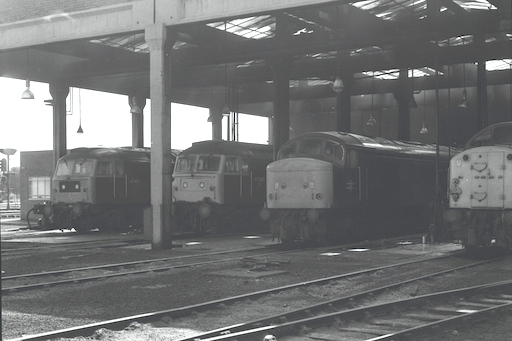
North Shed
From Steam to Diesel

York diesel depot, 1981. Science Museum Group. Image no. NRM_535_81.
Can you feel that? There’s change in the air. Opened in 1958, this building is an extension to the former engine shed behind us, made to accommodate one of the greatest shifts in rail technology to date – the transition from steam to diesel.
At this time, ‘modernity’ was the word on everybody’s lips. After the Second World War had ended in 1945, the rail industry faced intense competition from road travel. Cars and other road vehicles were becoming increasingly affordable. As more people began to ditch trains for an alternative that could take them door-to-door, the industry needed to act fast if it were to win back traffic from the roads.
This is where diesel engines came to the rescue. They were cheaper to run, easier to maintain and perhaps most importantly, offered a much quicker and more reliable service.
York responded to this change by building its own specialist diesel depot, the building we currently find ourselves in. It was here that diesel engines were stored and maintained, in much the same way as their steam counterparts next door. As we come in from the Great Hall, we can see to our left the doors where locos would be shunted for repair, and it is from just outside of there that the photograph on your phone was taken.
Here they would enter the depot, creeping slowly towards us before stopping straight ahead. Let’s imagine we’re one of the engineering staff. From where we are now we’d able to perform any essential maintenance work: checking the brakes looked okay, ensuring the motor was running fine, making sure moving parts were well lubricated.
It’s in this space that we can truly appreciate the change the railways were undertaking at this time. Not only are we in a separate building, constructed with the sole purpose of maintaining these new locomotives, but we also have our backs turned to the steam engines behind us. As we look around this room, we can only wonder what the future holds next for the rail industry.